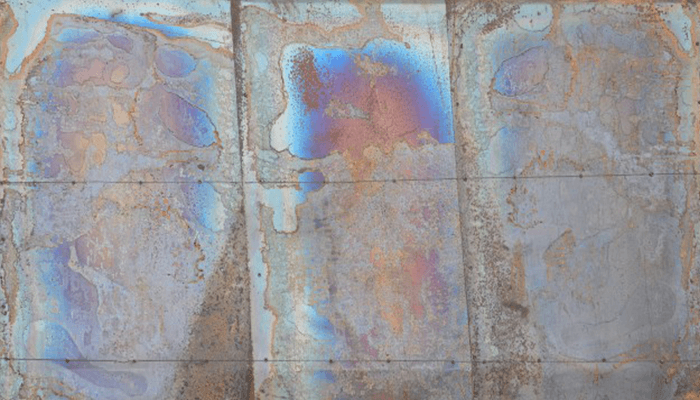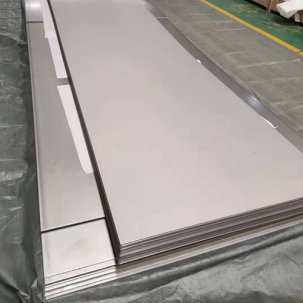When it comes to rusting metal it can be for an improved aesthetic display or for that authentic rustic look. Many people love to have that type of display as part of the overall decor to provide them with that iron artistic look.
It is also seen in the first entry into many people’s homes with a rusted metal front door that gives you that copper look. To have a real copper or brass front door will cost you far more than a rusted steel door.
We take a look at ways to get that rusted metal look at your home and you can use it in many different places.
What causes rust on metal/methods of rusting metal?
There are a number of ways that rust can start to appear on metal and they are not all-natural events through time and corrosion.
Factors that cause metal to rust
- The environment is one of the main reasons that metal will rust because of the moisture that is present in the air. It is also different at sea level where there is more moisture in the air that is the case with the inland environment
- Highly industrial areas may also cause metals to rust because of the high levels of chemicals that are present in the environment
- Where there are higher levels of humidity in the air the chances of rust to metal are also quite higher
- In normal areas with average humidity and low levels of chemicals in the air, it will take up to 4 days for metal to start rusting
- As you can see the more moisture there is the faster the rust rate, so if you dry the metal it will slow down.
The different steps on how to rust metal
There are certain steps that need to be taken when you want to deliberately rust metal surfaces for aesthetic purposes.
Step 1. Ready the surface
The first step is to prepare the surface of the metal you plan to rust and this step applies to all surfaces. Whether the surface is large or small, round or flat, the preparation process is exactly the same with all metal surfaces.
First, you need to move the piece out into the open where there is a lot of free airflow to protect you from poisonous fumes.
You would also want to have the piece in sunlight because the sun will help to make the rusting process go faster.
The idea is to work in an area that is well-ventilated and has enough sun to help you in the rusting process.
Step 2. Remove all paints
If there are any paints or a rust protective coating on the surface of the metal you need to remove it. This means that you will have to remove all of the substances that will prevent rusting like paint and other sprayed-on agents.
This is done by applying paint stripper to the surface of the metal object. Be sure to stick to the paint stripper manufacturer’s instructions.
When you have applied the paint stripper use a paint scraper to remove all paints and colors.
After this make sure every speck of paint has been removed before going to the next phase.
Step 3. Sand the metal
The next step is to use very fine sandpaper and remove every level of the protective coating that may prevent the metal from rusting. To do this properly you need to place the metal object on a flat and very stable surface to work undisturbed.
This will help you to lightly sand the object and clean it from an anti-rust agent and paints. You need to make sure you sand every part of the object for the best results.
Step 4. Spray with white vinegar
Now put some white vinegar in a spray bottle and put on protective gloves and eye gear for safety purposes. Generously spray the entire surface of the metal object with the white vinegar and leave for 5 minutes to air-dry in the sun.
You may have to leave it for a little bit longer, depending on your unique situation. Just keep an eye on it.
While the metal object is drying the acid, in the vinegar’s process of corroding the surface of the metal object will begin. You will be able to see the rust forming on the metal and the surface of the object will start to change color.
Step 5. Apply the chemical solution
When your object is completely dry you can now apply the solution of salt, vinegar and hydrogen peroxide to the surface. The formula of the solution is basically 2 cups of peroxide, 4 tablespoons of normal white vinegar, and a 1.5 teaspoon of salt.
You can make use of table salt in the solution, put it all in a plastic spray bottle, and swirl it to mix properly.
For a light layer of rust, you can spray the whole surface once over, for a deeper appearance you can spray three to four layers.
Spending on the final effect you can spray one part more than the other for different colors on the surface. Let it air-dry out in the sun for better effect.
Step 6. Seal the metal surface
To seal the surface of the metal object to stop any further corrosion use a clear acrylic sealer over the entire object.
Spray a thin layer of this sealer over the surface of the metal object and it will seal everything under the sealer.
So it will also prevent staining any other objects that are in close vicinity of this rusted piece of art. It will also preserve the effect on the surface of the metal object for many years.
These steps will provide you with a metal object that has an aging appearance for the future.
How to do it quickly
As described in a previous section you can easily rust your piece of metal in only a few minutes to have that aging effect.
You need a solution of hydrogen peroxide, table salt, and white vinegar as well as the sunlight and you can air-dry it.
You can have variable effects on your metal object or surface by applying in different layers, experiment with this for different looks. There are a few methods to use but they are all applied the same way, it is just the solution that differs.
- White vinegar is the chemical which causes most of the rusting effect
- Lemon juice will provide you with quite a surprising effect and appearance
- Muriatic acid and peroxide is quite a popular way to quickly rust metal
Why do you want to rust the metal
The reason people make use of the quick rusting of metal is purely for aesthetic purposes to provide an aging appearance.
There are also different stages of rusting that will provide you with different colors to play with when rusting metal.
Different types of steel are used for quite a variety of different effects and shapes, sheet steel is the most popular that are used. These sheet steels come in different gauges or thicknesses and thicker ones normally come coated with an agent that needs to be removed.
See the following YouTube video on how to experiment and rust metal for craft and more tips.
Final thoughs
As you can see, the methods of rust metal are quite easy. And we can do very easily at home to improve the decor at home. It can also be done with chemicals that are available for sale over the counter to make it even easier for you to do.
With this type of craft, you can use your imagination quite freely to create that special appearance or idea for much better aesthetics and display purposes.





